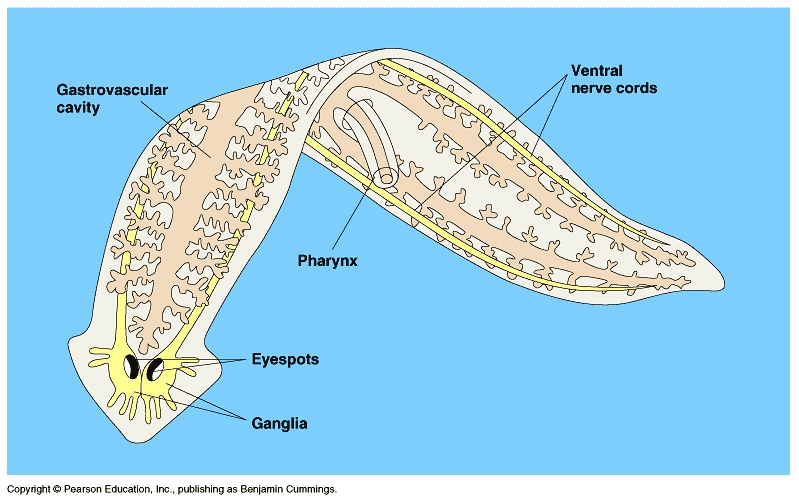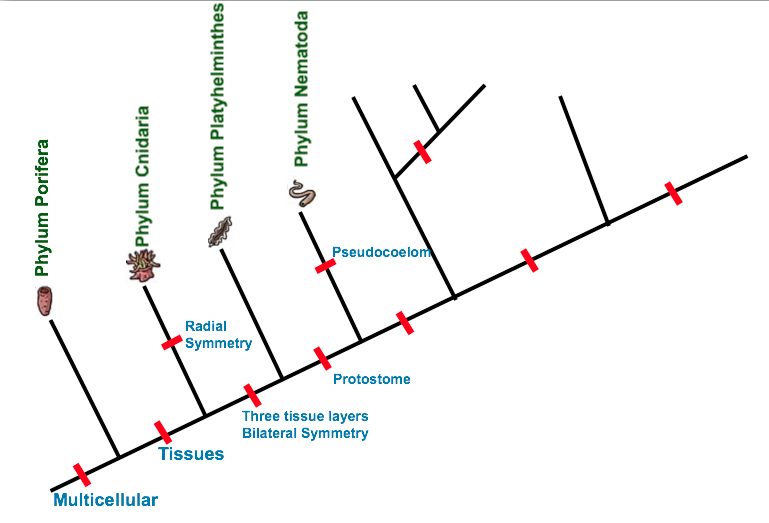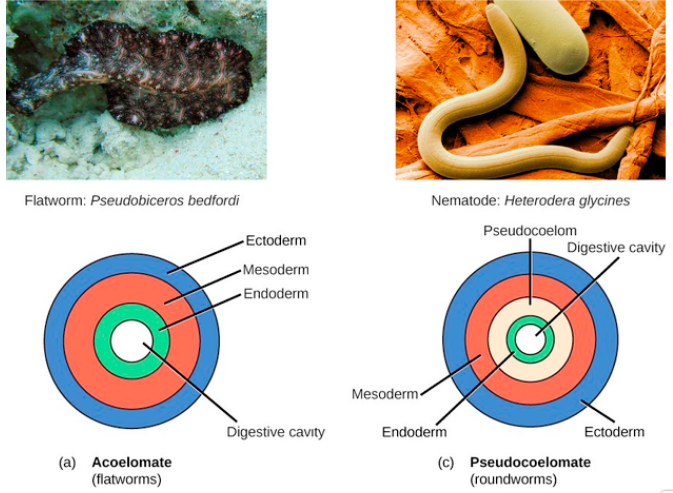Simple Inverts – Comparative Table Key
Try These! SimpleInvertMCreview
MC Key SimpleInvertMCreviewKey
Practice Questions:
-
Which phyla was the first to develop a rudimentary cephalization?
- Phylum Platyhelminthes – The Flatworms. This groups developed bilateral symmetry and a nervous system. They have a head region with simple accessory organs that detect changes in light (EYESPOTS). You probably saw these in our lab!

-
Sketch a cladogram of the the simple invertebrates. Please include phylum porifera, cnidarian, platyhelminthes, and nematoda and the derived character that emerged between each group.

3. Compare the tissue organization in all four simple invertebrate phyla. Describe how this shows an evolutionary continuum.
Porifera – No tissues, Cnidaria – Primative tissue (2 layers – endoderm, ectoderm, mesoglea (jelly) in between), Platyhelminthes – 3 layers, triploblastic acoelomate, Nematoda – 3 layers, triploblastic with a pseudocoelom
- Tissue layers are getting more and more complex.
- The presence of a cavity, even though it isn’t a true body cavity, is still a major advancement. This allowed the one-way system to develop. More room for organs.
- Each group is building off the previous one. It shows progress over time from the shared characteristics that are developing.
4. Sketch a cross section of an acoelomate and a pseudocoelomate. Label the three cell layers on each diagram.

5. Why is a pseudocoelom not considered a true coelom?
A true coelom (body cavity) is a space within the mesoderm. Organs formed inside a coelom can freely move, grow, and develop independently of the body wall while fluid cushions and protects them from shocks. In humans, we have the pleural cavity (surrounds lungs), the pericardial cavity (surrounds heart), and the peritoneal cavity (surrounds digestive organs).
A pseudocoelom in not a true coelom since it is not a space within the mesoderm, but rather a space between layers. In this case it is a space between the endoderm and mesoderm.
6. What benefits does a one-way digestive system give to organisms? Which was the first groups to develop this system?
A one-way system allows for complete digestion of food and more time to adequately absorb nutrients. Eventually, as the digestive system became more complex, different nutrients/substances good be processed as well. Also, the one-way system allowed for organisms to eat while expelling waste (I guess that sounds good), but this means waste removal does not interfere with eating.
And question 7 is all up to you! Use your knowledge and justify your answer with what you know:) I am looking for your ability to apply the knowledge and discuss the traits that both help identify and cause issues with your classification!
Comments by shaun pletsch